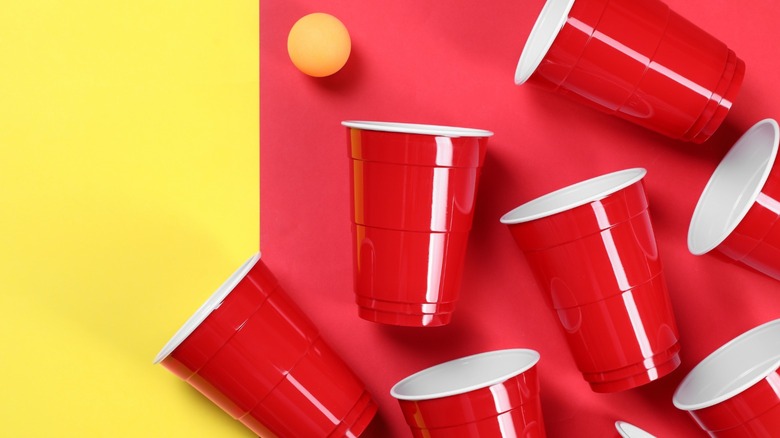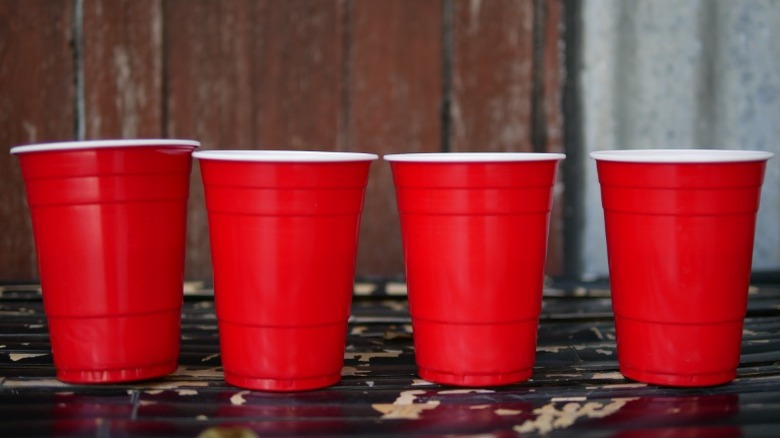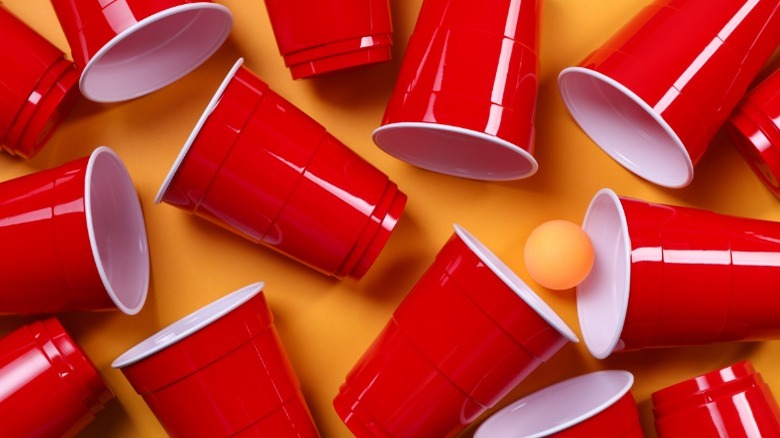Do The Lines On Red Solo Cups Mean Anything?
If you've been at a party surrounded by Red Solo Cups — and what good party doesn't have them — you might have seen people using them to estimate their alcohol amounts. The lore is that the lines or ridges on these cups are meant for measuring out the proper serving sizes of different kinds of alcohol. In reality, the demarcations had nothing to do with alcohol when the cups were first invented and designed.
One company representative shared with PolitiFact that the ridges on the iconic Red Solo Cups are there for a number of important reasons more related to ease of use rather than liquid content. It turns out the indentations are there to make the sipping experience easier, and to prevent cups from sticking together when you stack them — and we all know how sticky solo cups can get at a party.
The lines still can correspond to some standard measurements
Although not originally meant for measuring, the lines on red Solo cups do actually match up surprisingly well with alcohol serving sizes. According to the National Institute on Alcohol Abuse and Alcoholism, a standard drink equals approximately 1.5 ounces of liquor, 5 ounces of wine, and 12 ounces of beer. Generally, a standard drink has 14 grams of pure alcohol, so as the alcohol content of a beverage decreases, it takes more, volume-wise, to hit that 14 gram mark.
For the original Solo Cup that was born in 1978, the three prominent lines represent measurements of about 1 ounce, 5 ounces, and 12 ounces. These measurements do happen to align with the definitions of a standard drink, even though we know this is a coincidence according to the company. The connection apparently went viral more than 10 years ago, but has caught on in popular culture. Colleges and universities even use Solo Cup imagery to teach their students about what a standard drink is equal to, and how much alcohol they should be safely consuming.
Other ways the lines on the cups are helpful
So standard drinks can be approximated in your Red Solo Cup, but what else can those lines be used for? As it turns out, they're actually pretty useful beyond measuring alcohol and providing extra grip during the sipping experience. Back in 2012, Solo's Facebook account posted a fun graphic showing the capabilities of their iconic Red Cup. Apparently the 1.5 ounce line is often used when determining how much mouthwash to swish, and the 5 ounce line is the perfect serving of cereal. If you multiply 12 ounces — the top line — by five, you'll get the amount of water it's recommended you should drink every day, too.
Red Solo Cups could even become a useful tool in the kitchen or behind the bar, especially if you're missing a measuring jigger. For example, if you're looking to make a classic Moscow mule cocktail, use the bottom line to measure 1.5 ounces of vodka. If you're a fan of soda but are trying to cut back, use the 12 ounce line to measure out one serving — that way you won't be tempted to keep sipping. When you're making a sundae and want to drizzle one serving of whiskey-infused chocolate magic shell, the 1.5 ounce line will be your best friend.



